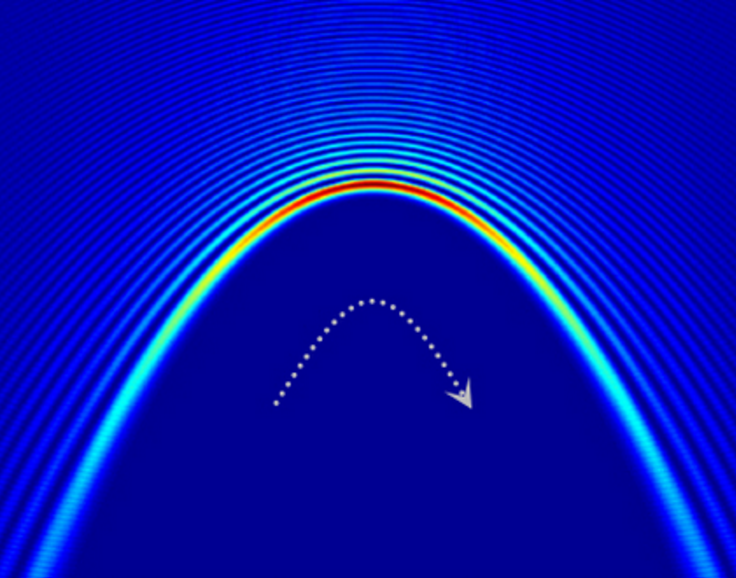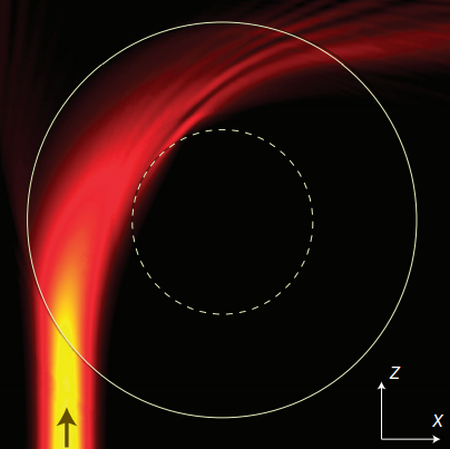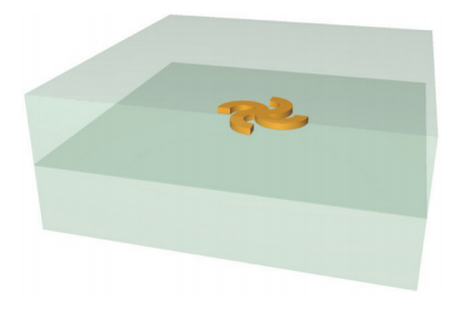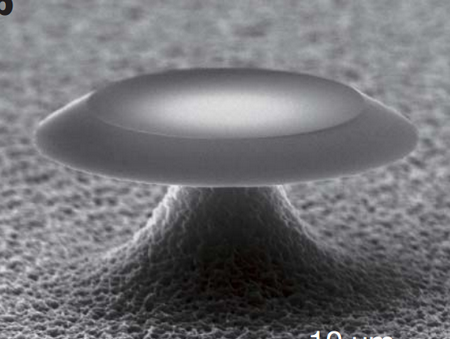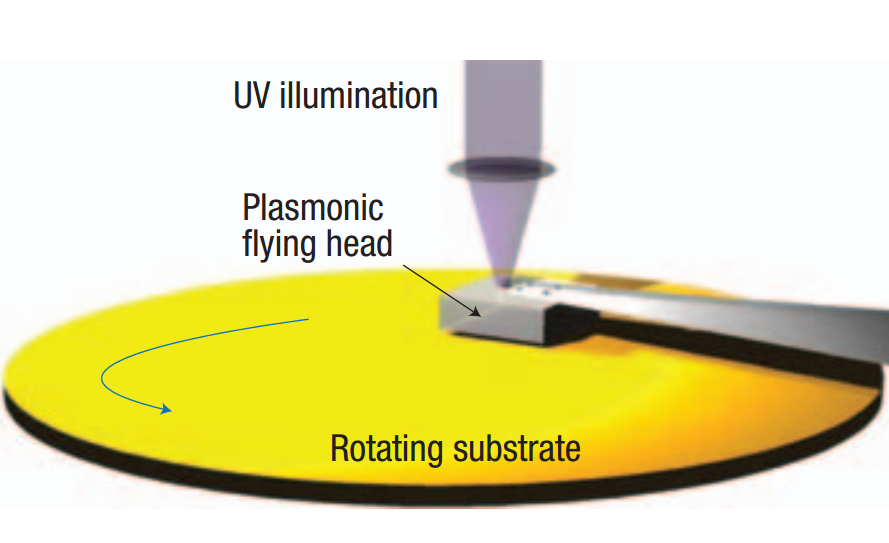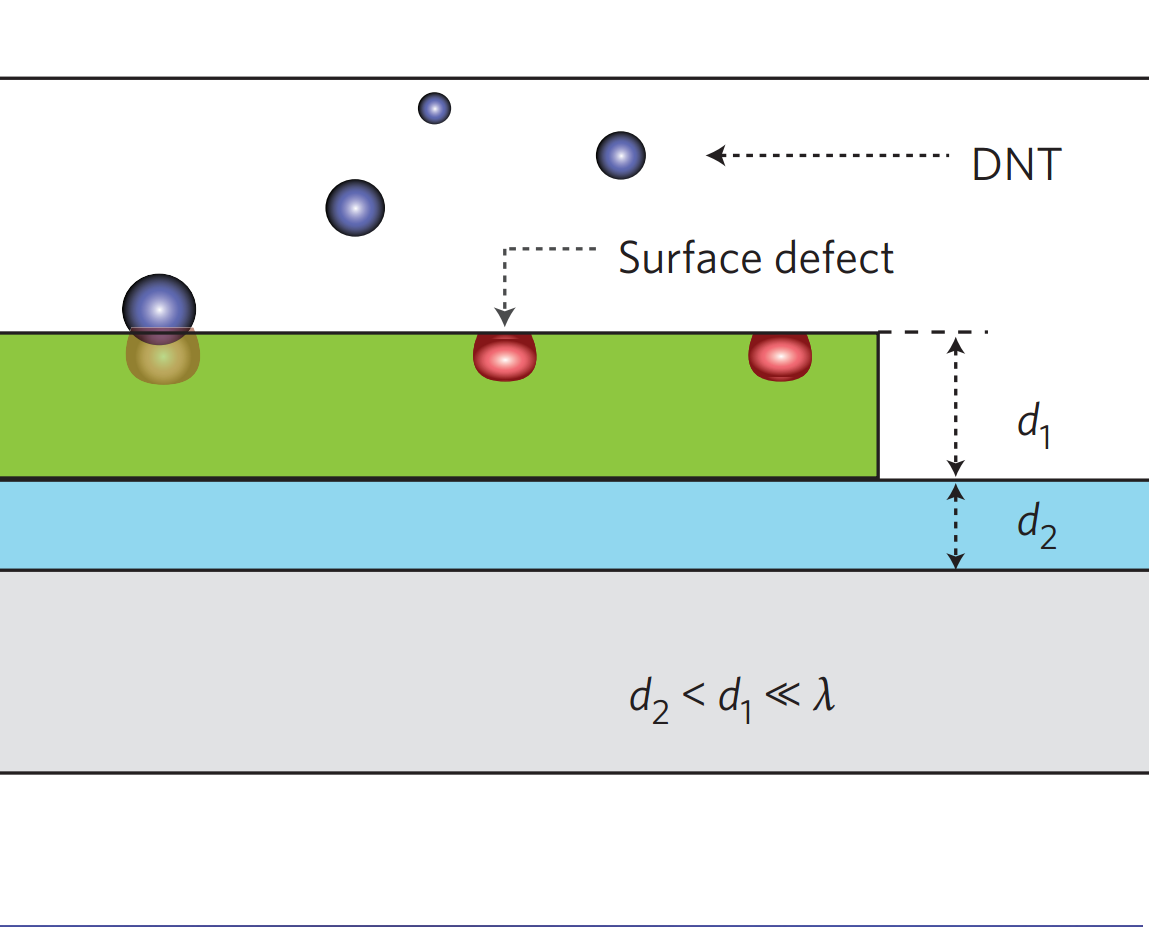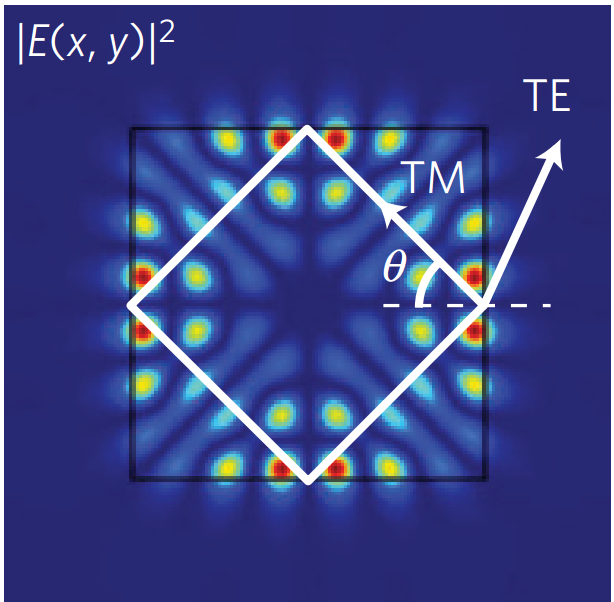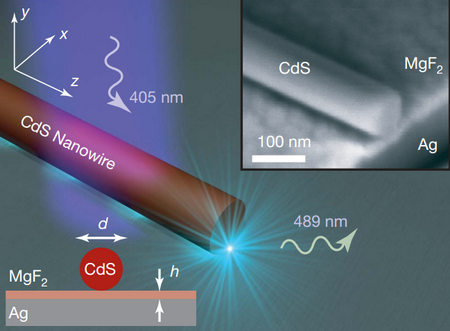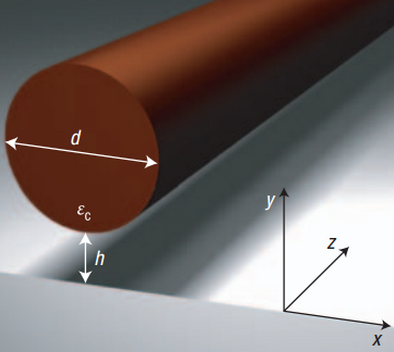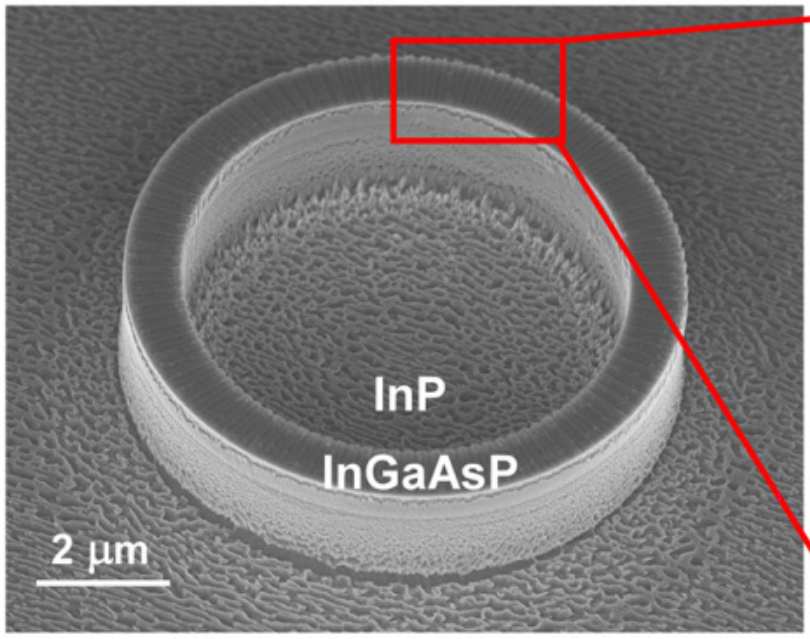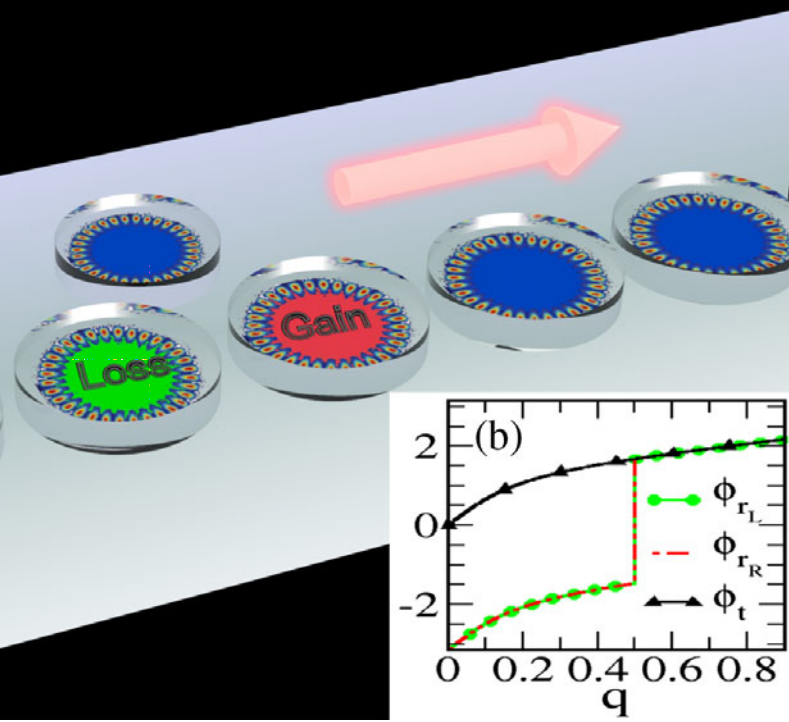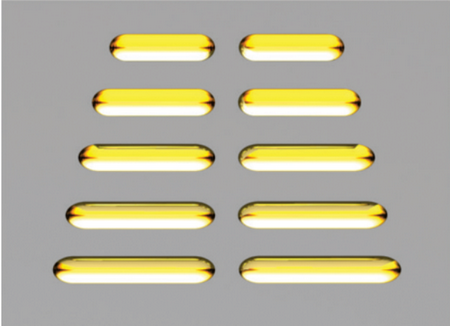Our group is also interested in how light behaves at the nanoscale. We are interested in nanophotonic or plasmonic phenomena for devices, such as lasers, lenses, or imaging applications. Additionally, we have researched more fundamental topics, such as non-Hermitian optics.
Plasmonics
Plasmonics lenses can be used to focus light, as the surface plasmons have shorter wavelength than the light that excites them. These plasmonic spots can be nanometer scale with an intensity over a hundred times higher than the incident light. We have used this property to perform nanolithgoraphy and build a flying plasmonic lens head which may be used for maskless lithography. Similarly, we have also demonstrated plasmonic Luneburg and Eaton lenses to focus plasmon polaritons.
We have also developed a super-resolution imaging method based on Brownian motion from metal nanoparticles. We scanned the surface of a rough metal film, pinpointed the hotspots and probed the local field inside. This enabled the imaging of the fluorescent enhancement profile of single hotspots down to 1.2 nm.
Nano-laser
Our group has done much work in developing nano-lasers. We proposed a hybrid mode that integrates dielectric waveguiding with plasmonics. Using a dielectric nanowire separated from a metal surface, we proposed a method to achieve subwavelength confinement of the light and long-range propagation. Using a semiconductor nanowire on top of a silver surface enabled us to demonstrate a laser using the hybrid plasmon waveguide. This means that the gap between the nanowire and silver confined the light to only a few nanometers, with a significantly different emission rate than the photonic laser.
Furthermore, we went on to demonstrate room-temperature plasmon lasers using total internal reflection, and we also used these plasmon lasers to build a sensor for explosives detection.
Non-Hermitian optics
We have used anti-Hermitian coupling in plasmonic systems for spatially manipulating light on the nanoscale. We fabricated plasmonic antenna arrays and directly observed the selective excitation of individual antennas at carefully chosen wavelengths using NSOM. At each excitation, only a single antenna was strongly excited due to anti-Hermitian coupling, agreeing well with our simulation results.
In non-Hermitian systems, we have proposed a class of spectral singularities which emerge from the coincidence of two independent singularities with highly directly responses. These results enable unidirectional perfect absorbers and lasers. In addition, by using a parity-time (PT) symmetry breaking structure, we fabricated a microring laser with an alternating gain and loss materials. We showed that a typical microring laser may be multimode, but using our structure we achieve a PT microring lasing at a single mode.
